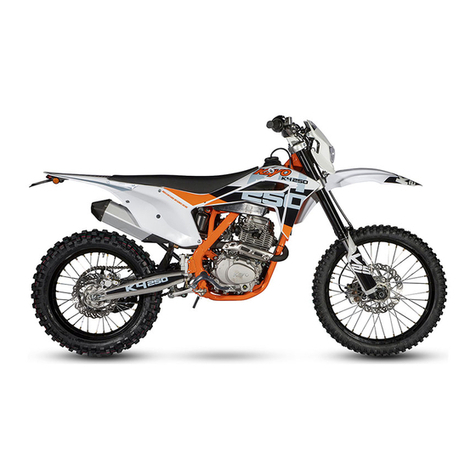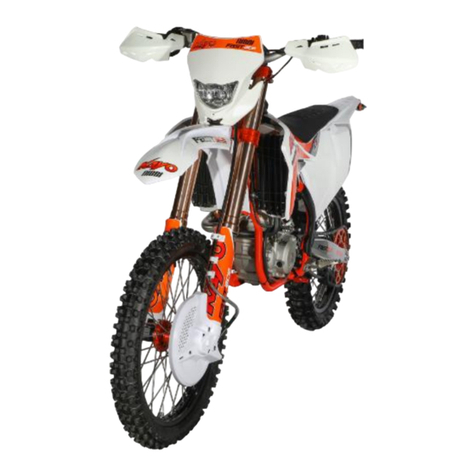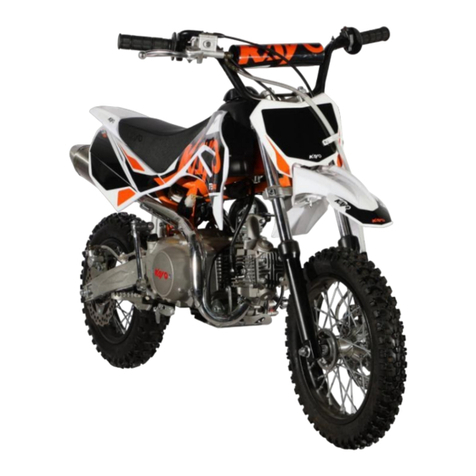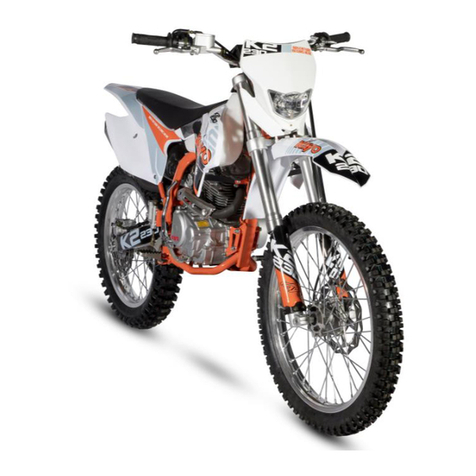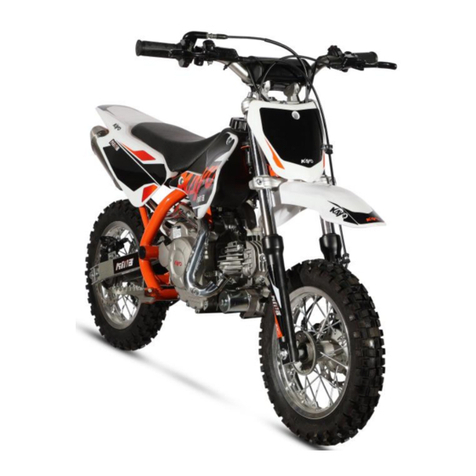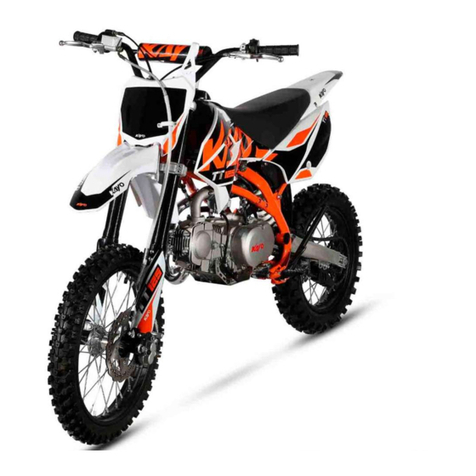
ZHEJIANG KAYO MOTOR CO., LTD.
www.kayomoto.com
CHECK THE DISC BRAKE…………………………................................................................41
REFUEL THE FRONT BRAKE LIQUID LEVEL…..................................................................41
CHECK THE FRONT BRAKE PADS….....................................................................................41
CHECK THE FREE-PLAY OF FOOT BRAKE….......................................................................42
CHECK THE REAR BRAKE DISK LIQUID LEVEL................................................................43
REFUEL THE REAR BRAKE DISK LIQUID LEVEL..............................................................43
CHECK THE REAR BRAKE PADS............................................................................................44
TIRE INSPECTION AND MAINTENANCE.....................................................................................45
REMOVING OR INSTALLING THE FRONT WHEEL.............................................................45
REMOVING OR INSTALLING THE REAR WHEEL...............................................................45
TIRE INSPECTION......................................................................................................................45
CHECK TIRE PRESSURE...........................................................................................................46
CHECK SPOKE............................................................................................................................46
ELECTRICAL SYSTEM.....................................................................................................................47
REMOVING OR INSTALLING THE BATTERY.......................................................................47
CHANGING THE BATTERY.......................................................................................................47
MAIN CABLE
KT250 VEHICLE WIRING DIAGRAM......................................................................................48
COOLING SYSTEM...........................................................................................................................49
COOLING SYSTEM PROFILE...................................................................................................49
REMOVING OR INSTALLING THE COWLING AND HOSE.................................................49
CHECK ANTIFREEZE LEVEL...................................................................................................50
DRAIN OUT THE COOLANT.....................................................................................................50
FILLING THE COOLING SYSTEM...........................................................................................51
INTRODUCING ABOUT THE ENGINE STRUCTURE ...........................................................52
INSTALLING THE ENGINE.......................................................................................................52
ENGINE MAINTENANCE AND ADJUSTMENT......................................................................52
CHECK THE VALVE CLEARANCE..........................................................................................52
COMPRESSION PRESSURE CHECK........................................................................................53
ADJUSTMENT OF CLUTCH CONTROL SYSTEM.................................................................53
THE ENGINE ADJUSTMENT...........................................................................................................54
IDLE SPEED ADJUSTMENT OF CARBURETOR...................................................................54
CLEAN THE CARBURETOR.....................................................................................................54
CHECK THE SHIFT LEVER POSITION....................................................................................55
ADJUST THE SHIFT LEVER POSITION..................................................................................55
INSPECTION OR REPLACEMENT OF SPARK PLUGS..........................................................55
ENGINE LUCRICATION SYSTEM...................................................................................................56
LUBRICANT SELECTION……………………………………………….................................56
LUBRICANT INSPECTION………………………………………............................................56
LUBRICANT REPLACEMENT……………………………………………..............................57
REMOVAL AND INSTALLATION OF OIL PUMP....................................................................57
OIL PUMP INSPECTION………………………….……………………………………….….58
COMMON PROBLEMS AND CAUSES OF LUBRICATION SYSTEM……………………58
ENGINE TIGHTENING TORQUE TABLE………………………………………………………59

